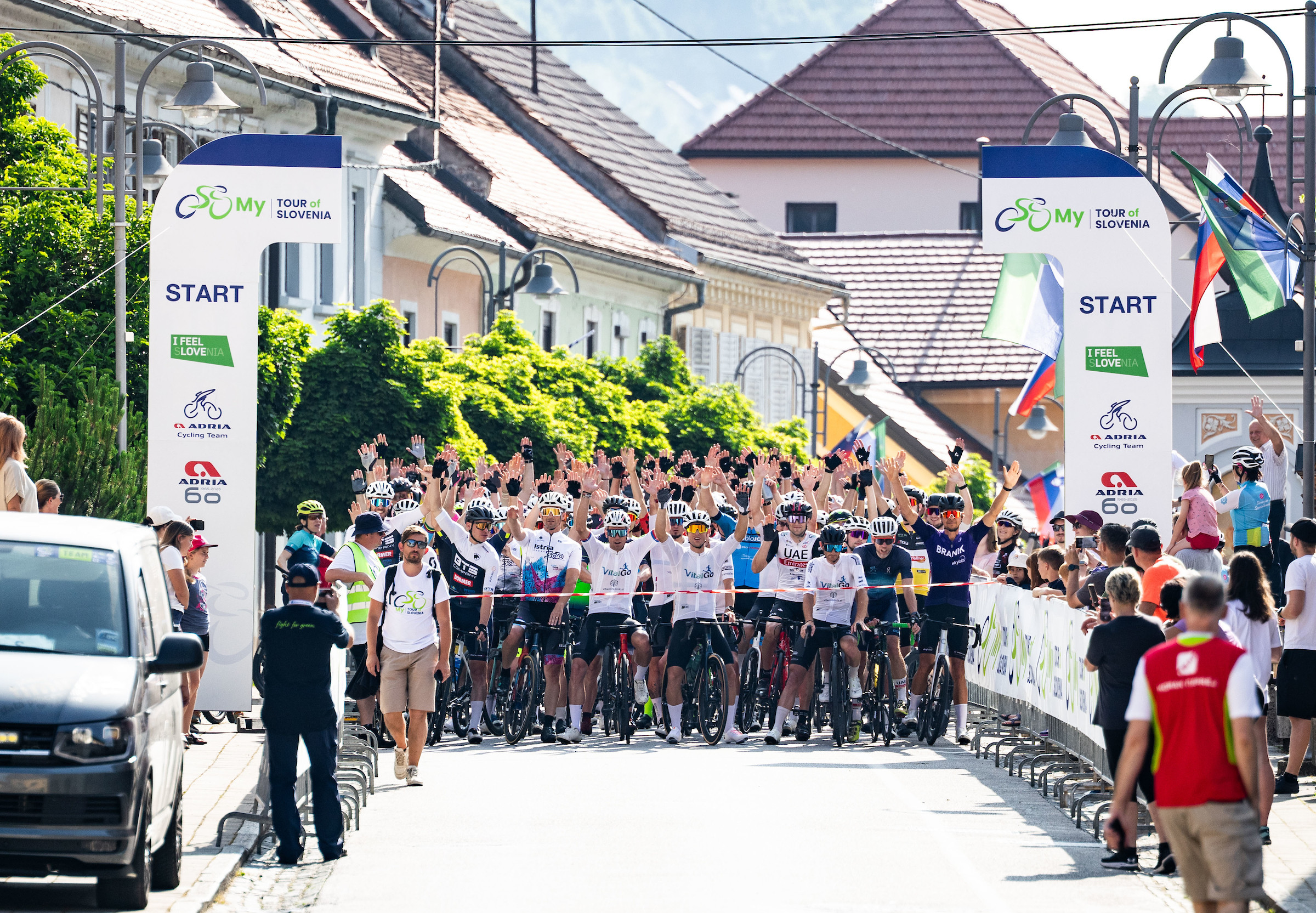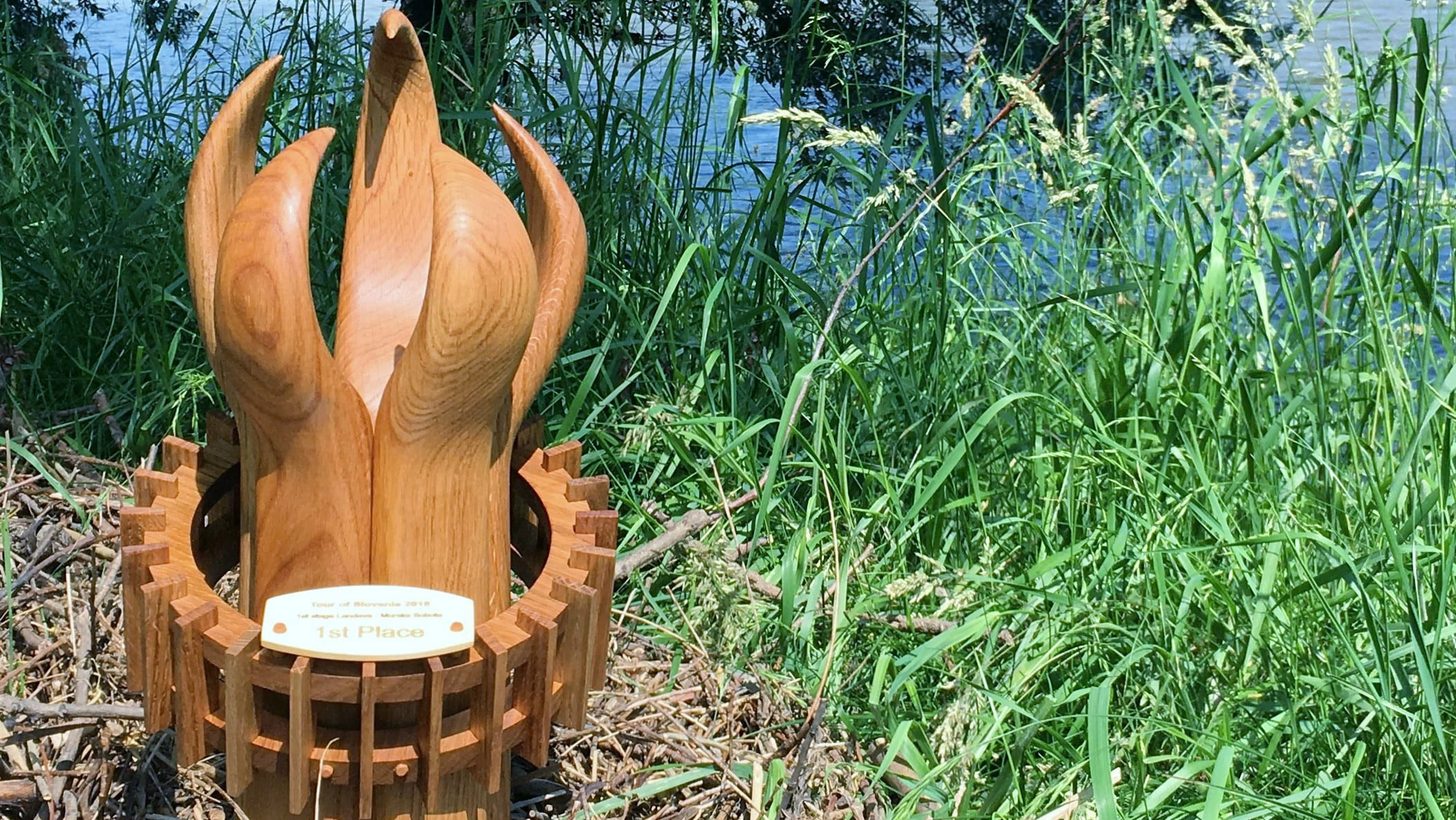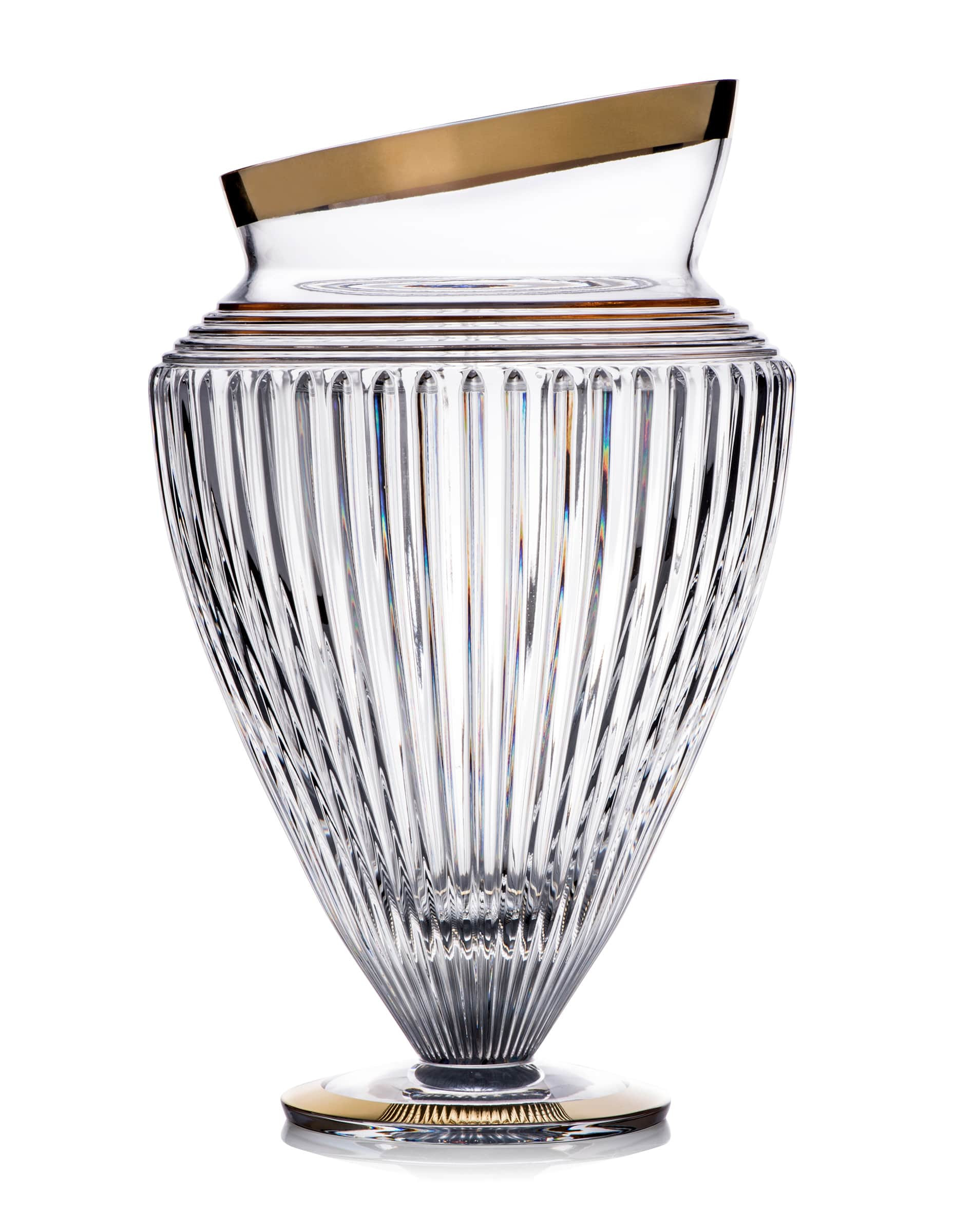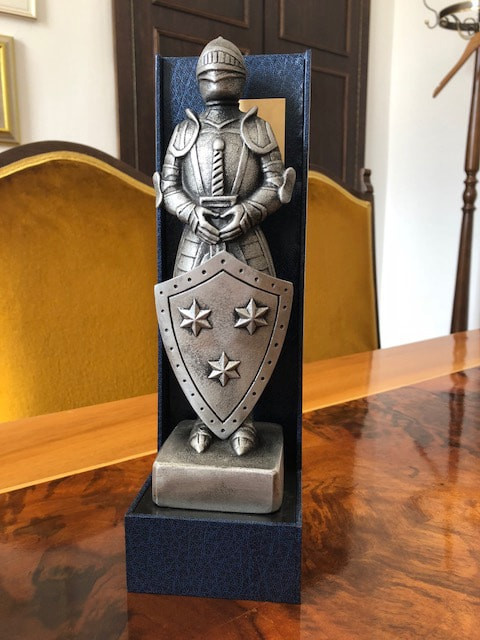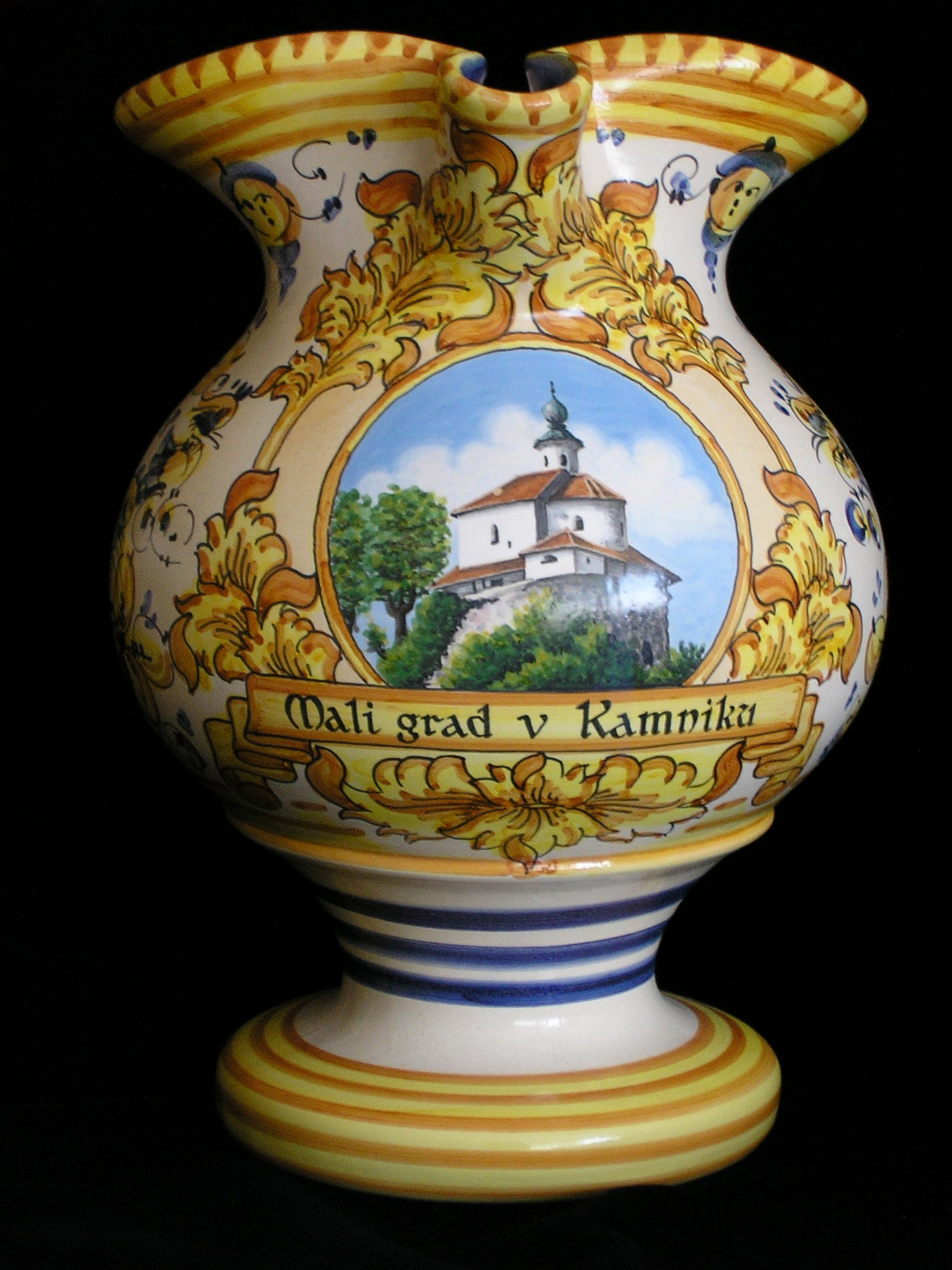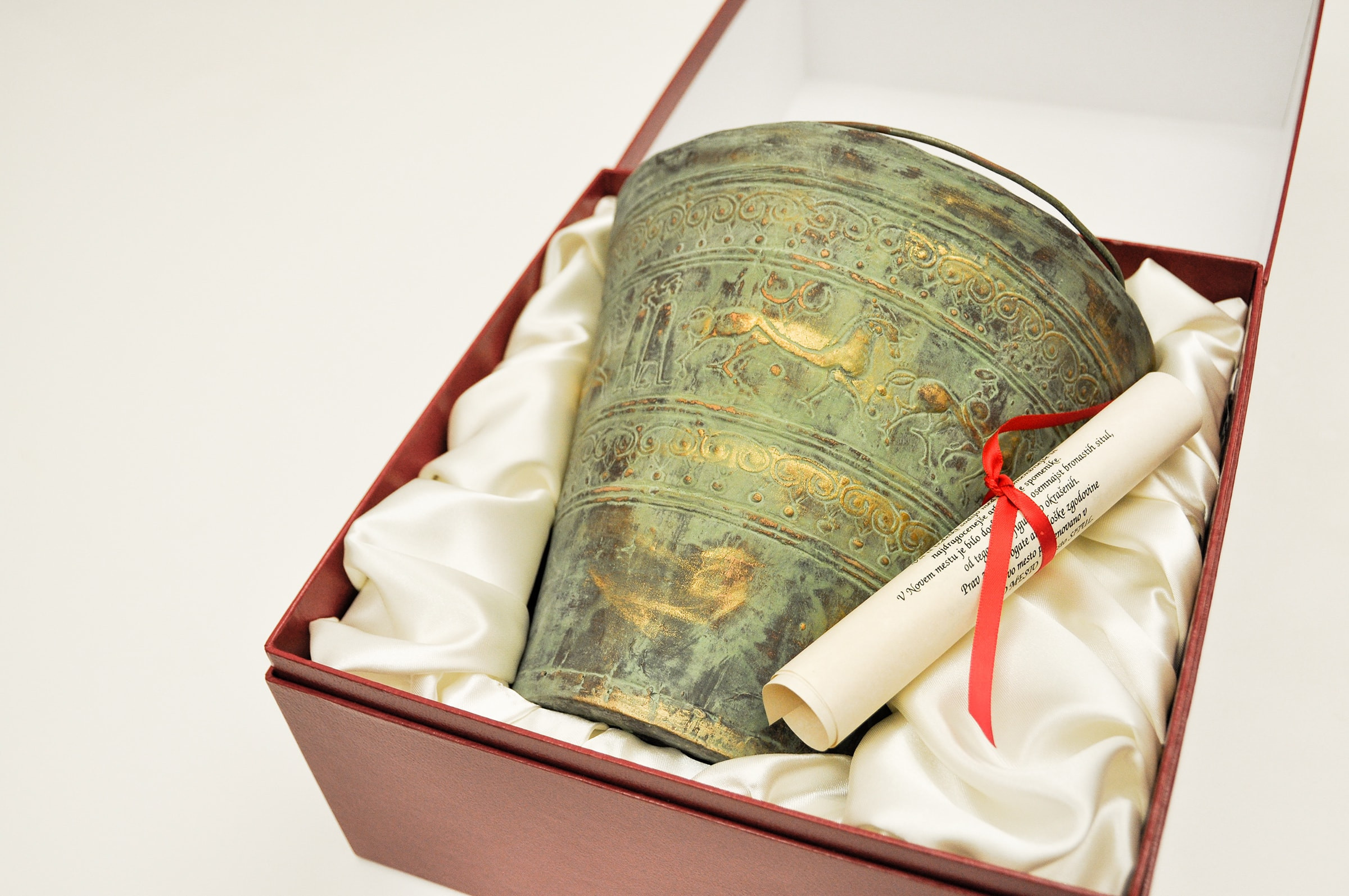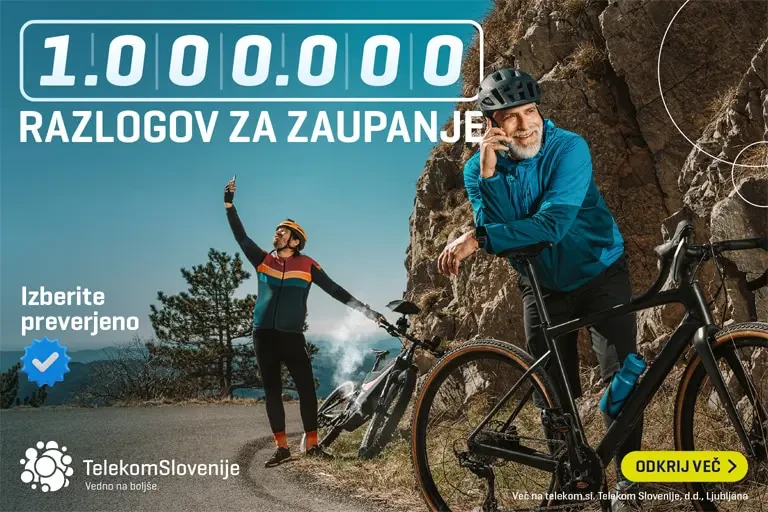5 trophies for the stage winners
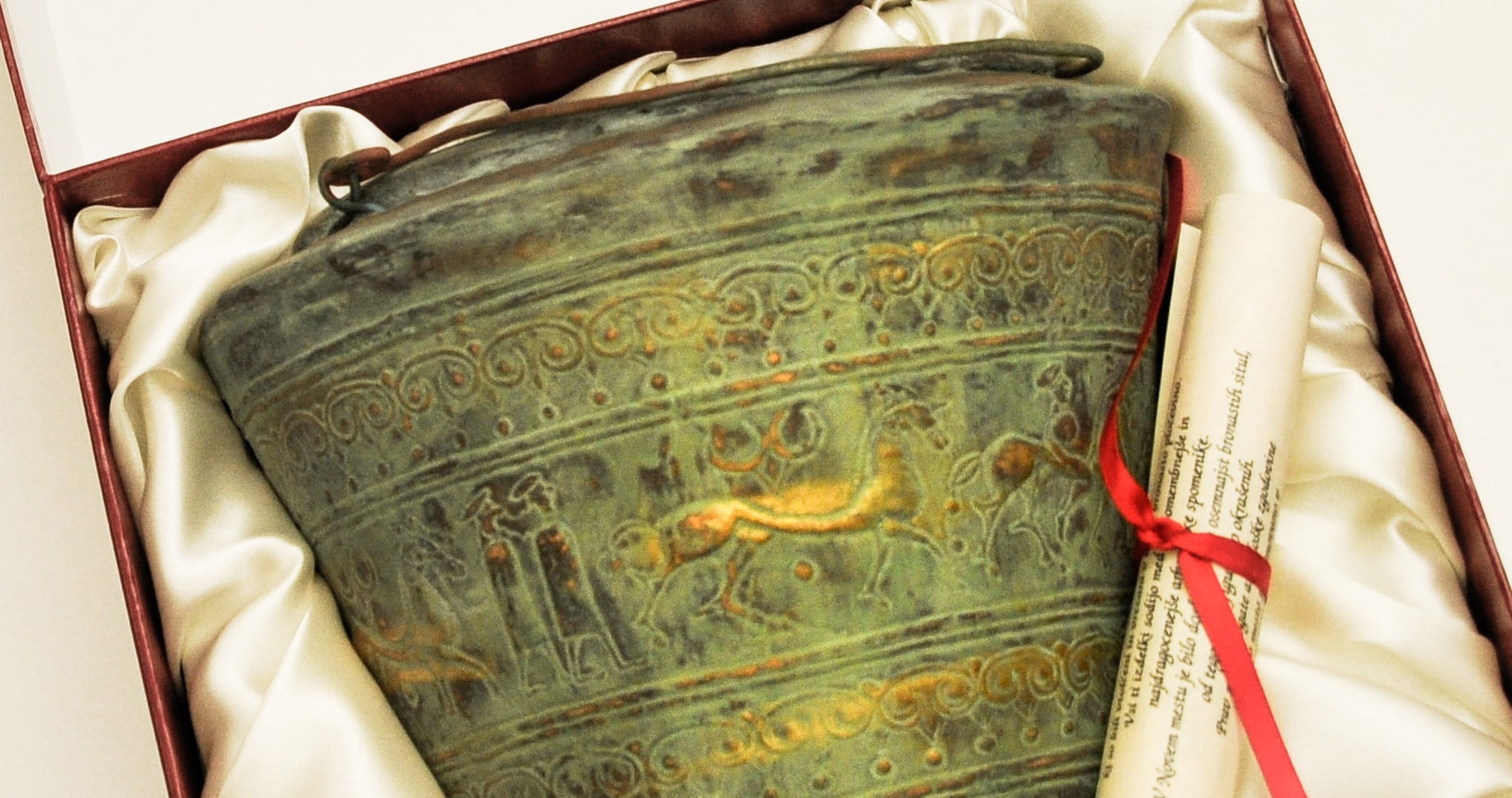
We talk a lot about replica of Wheel 5200, trophy for the overall winner of the race. But today we’ll introduce five unique trophies for the winners of five stages. Each is true piece of art.
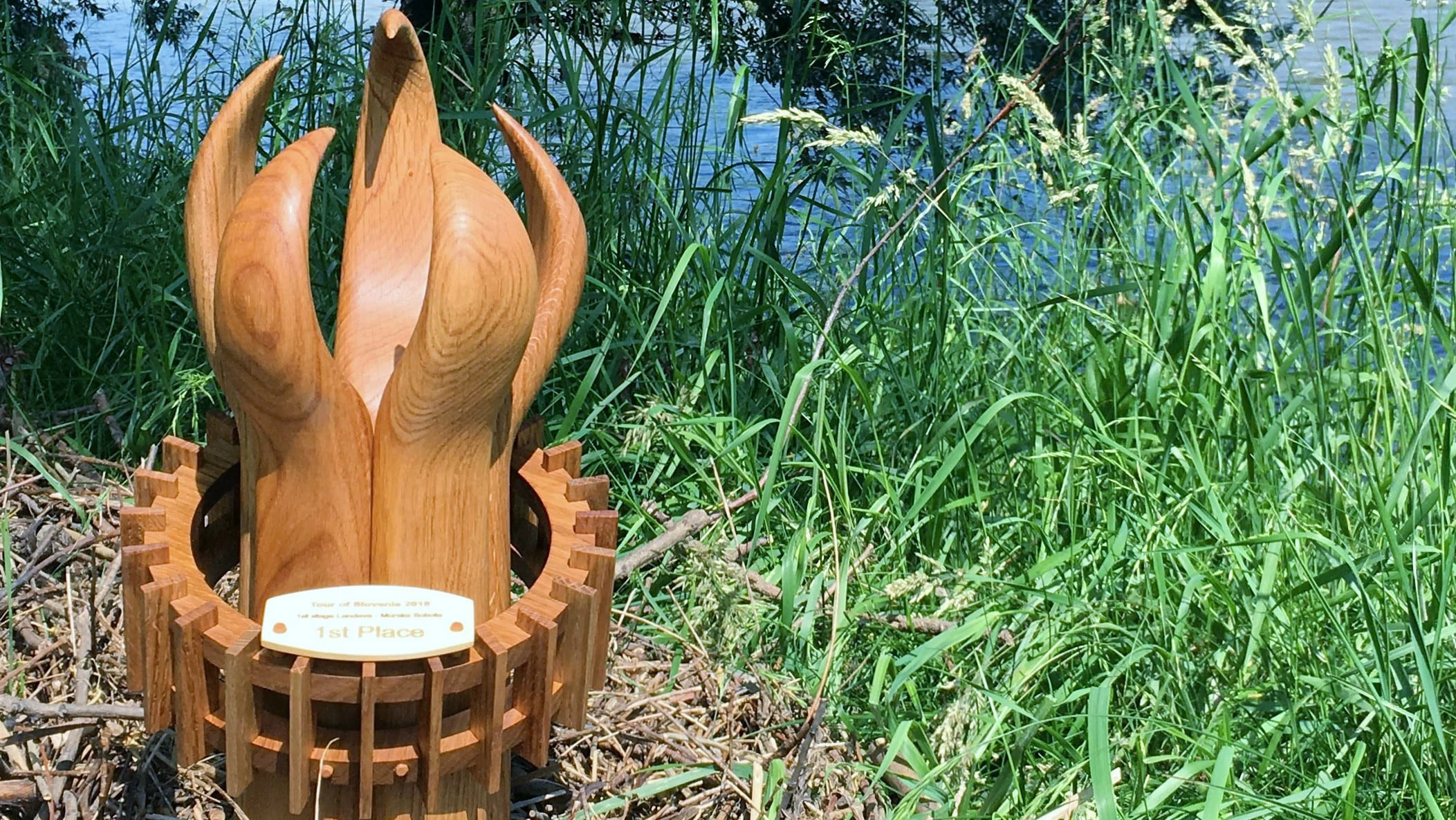
Stage 1, Murska Sobota: The Wheel of Life
The central part of the handmade cup is comprised of five pillars that are connected at the bottom and separated at the top. The whole cup is circled by a miniature of the mill wheel, which is attached to the core with wooden pegs. The cup for the first stage win will thus introduce the motif of the wheel, which runs through the cycling and the whole race, all the way to the final cup for the winner of the race.
The pillars of the Pomurje Wheel of Life represent five elements of nature and also announce five stages of the race. The tops of the pillars symbolize water, flow, undulation of the River Mura and its power. Water with its energy runs the mill wheel and millstones that grind cereal – the well of life.
The cup was made from the recycled oak wood of an old wine barrel by a young craftsman. Thus the region of Pomurje communicates its enthusiasm for sustainable use of materials, circular model of economy and the encouragement of creativity in rural areas.
Author of the cup: Darko Ornik @OrnikWoodArt
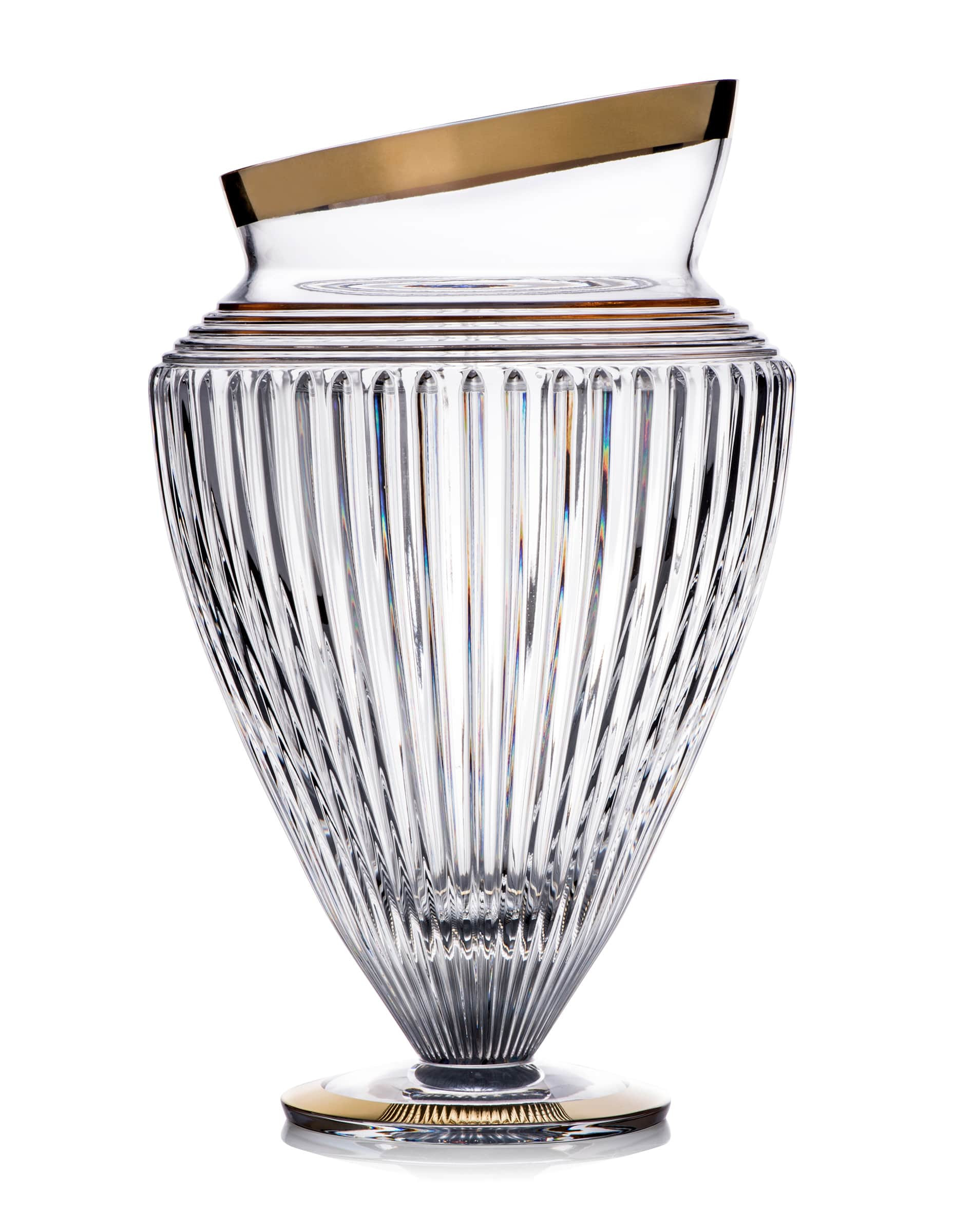
Stage 2, Rogaška Slatina: Crystal amphora
The city of Rogaska Slatina is a keeper of glassmaking tradition of over 350 years. Handcrafted crystal goes hand in hand with prestigious tourism and carry the fame of Slovene knowledge and tradition all over the world.
With its tradition Rogaška is a chic & trendy luxury brand, creating premium home and lifestyle products in high quality crystal for global markets.
The trophy is one of the best examples of the skilled craftsmanship at Rogaska, it encompasses all levels of hand work in Rogaska.
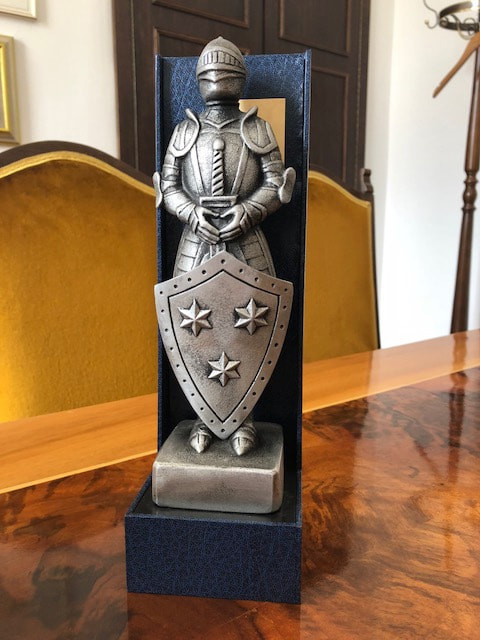
Stage 3, Celje: Celje knight
The finish line for the third stage of the Tour of Slovenia 2018 will be at Celje's Old Castle. The magnificent fortress was the seat of the most renowned and influential dynasty with original estates in the territory of today's Slovenia – the Counts of Celje who reached the ranks of the Princes of the Holy Roman Empire. In the short period of their reign in the 14th and 15th century, this ambitious and highly successful dynasty left an indelible mark as they relied on cunning policy and strategically calculated marriages to constantly expand their wealth, influence, and power. Their ascent was meteoric; yet the treacherous murder of Ulrich of Celje in Belgrade brought it to a miserable end. Today, the three golden stars against blue background remind us of the glorious period of the town on the Savinja River, which helped shape the mediaeval Europe.
The knight presented to the winner of the 3rd stage of the Tour of Slovenia symbolizes power, authority, and the greatness of the Counts and Princely Counts of Celje. The pride of the people of Celje lives to this day, and the spirit of the mighty reign of the Celje dynasty will persist forever. Those who appreciate and respect their roots can spread their wings wide on their way into a bright future.
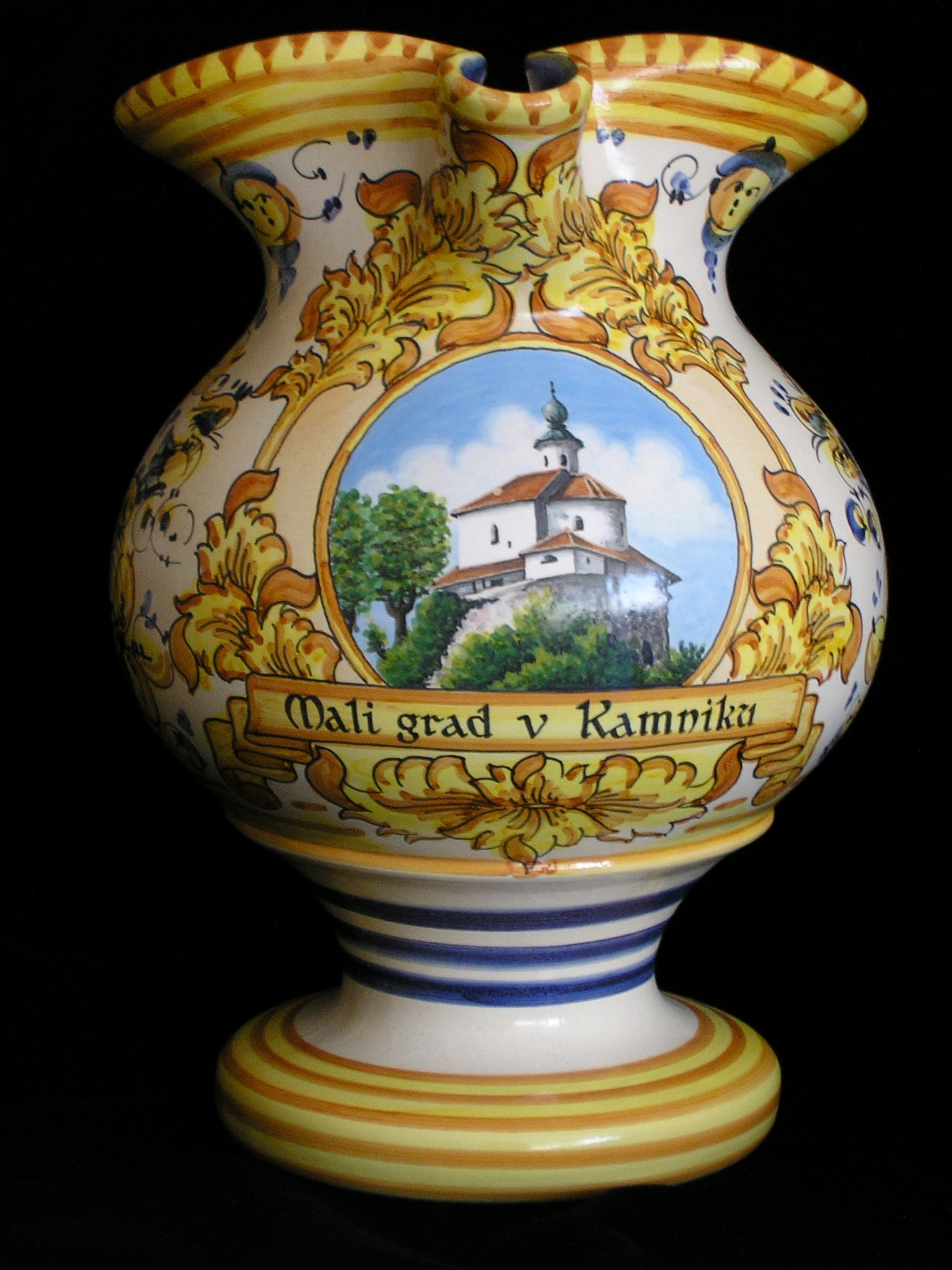
Stage 4, Kamnik: Kamnik Majolika
Kamnik has a long history of ceramic art. Florjan Konšek established the company for ceramic art back in 1855, the peak of the industry happened after the second World War when Kamnik pottery got a specific craftsmanship – with distinct shapes and paintings. Pottery from the area has a typical white appearance and paintings under the glaze. This art is important element of the Kamnik’s cultural heritage.
Kamnika Majolika for the stage winner was handmade by Irena Radej in the (house of ceramics) KUD Hiša Keramike.
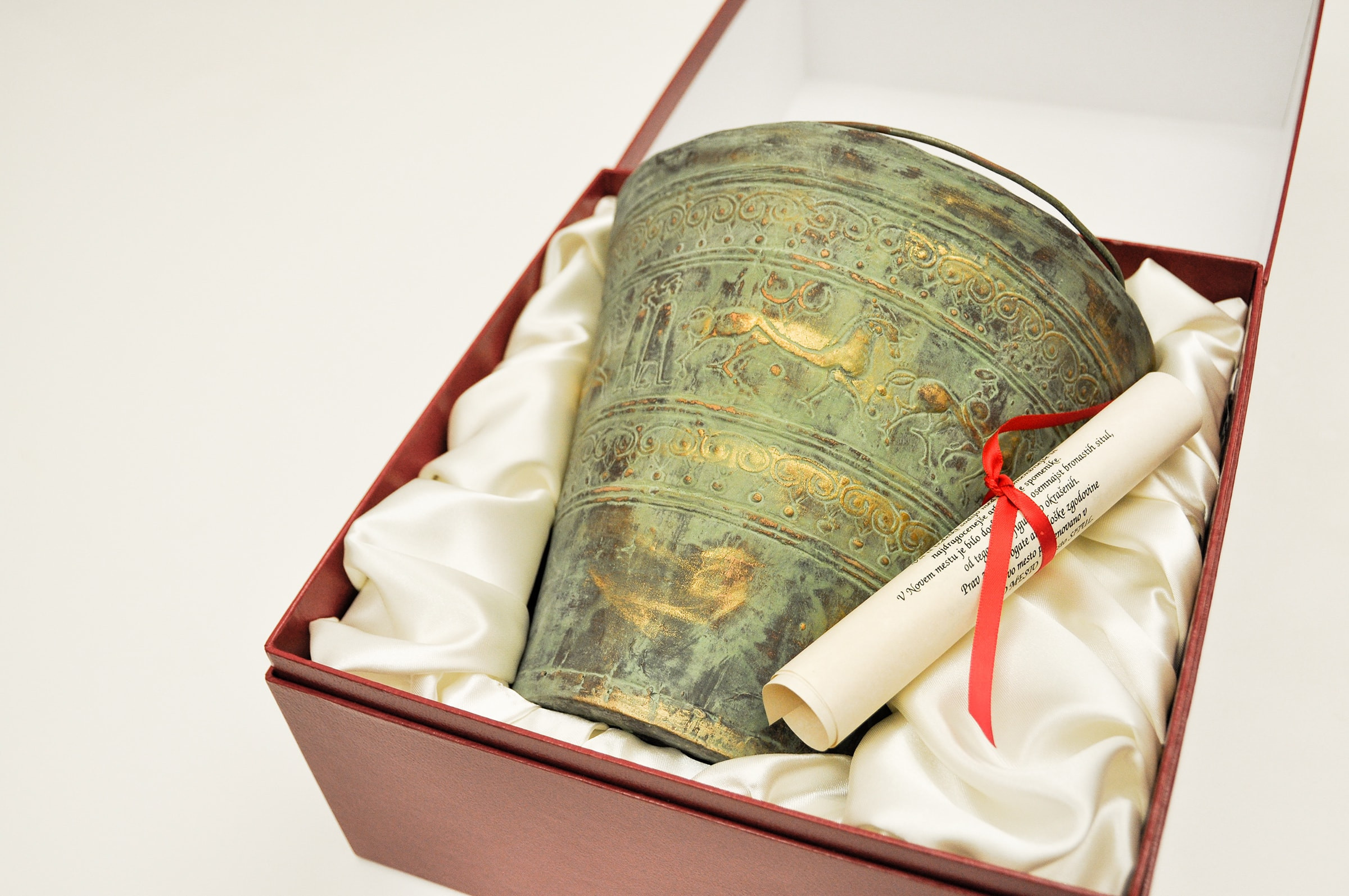
Stage 5, Novo mesto: Situla of Novo mesto
Winner of the final stage of this year's Tour of Slovenia will get the Situla of Novo mesto. Bronze situlae are the most important archaeological findings and reason that put Novo mesto among the most important prehistoric sites. Situlae art, which began to flourish in the 7th century BC in northern Italy, south-east Alpine region and Istria, was interrupted by Celtic invasion of these territories. Its importance lies in the artistic depiction of human and animal figures that were hammered out and engraved into thin sheets of bronze. These artefacts represent part of Slovenia's most important and valuable archaeological heritage. In Novo mesto – The Town of Situlae – 18 bronze situlae have been excavated to date, nine of which are figurally decorated. Its rich history has given the town its name NOVO MESTO, The Town of SITULAE.
Latest news
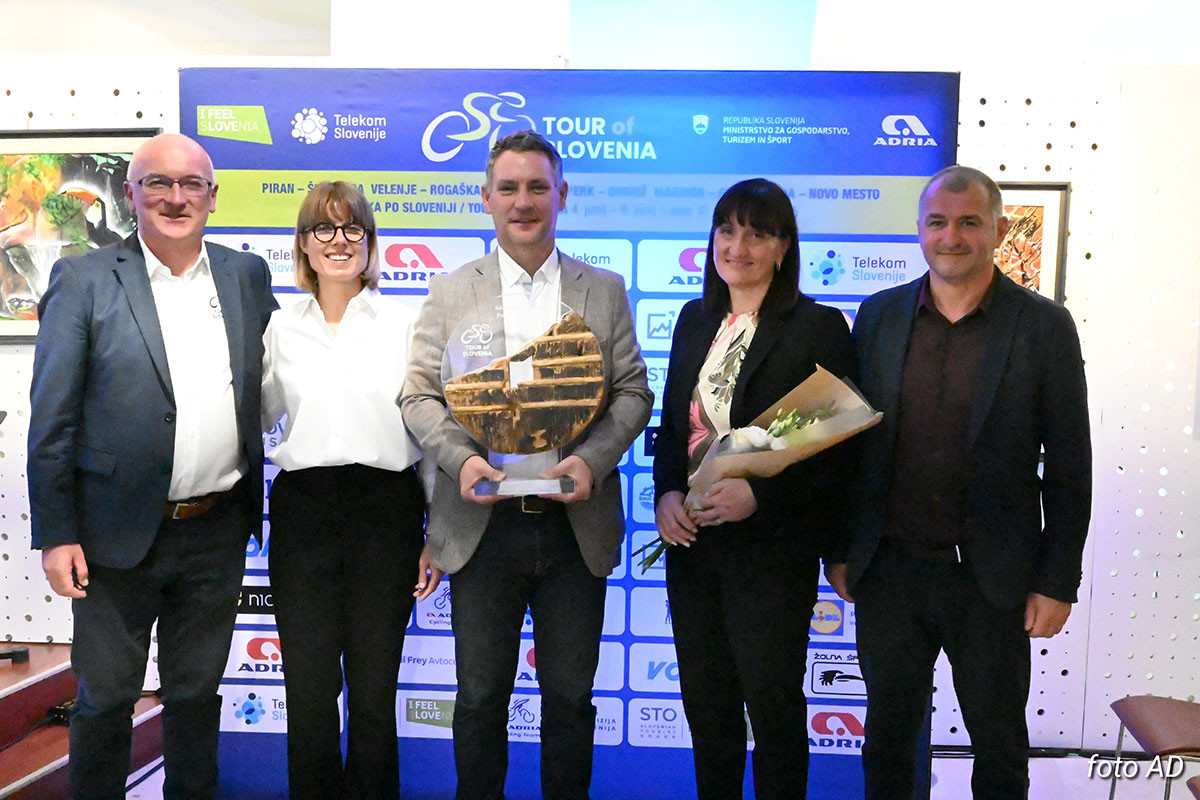
Naj gostitelj 31. dirke Po Sloveniji je Ormož
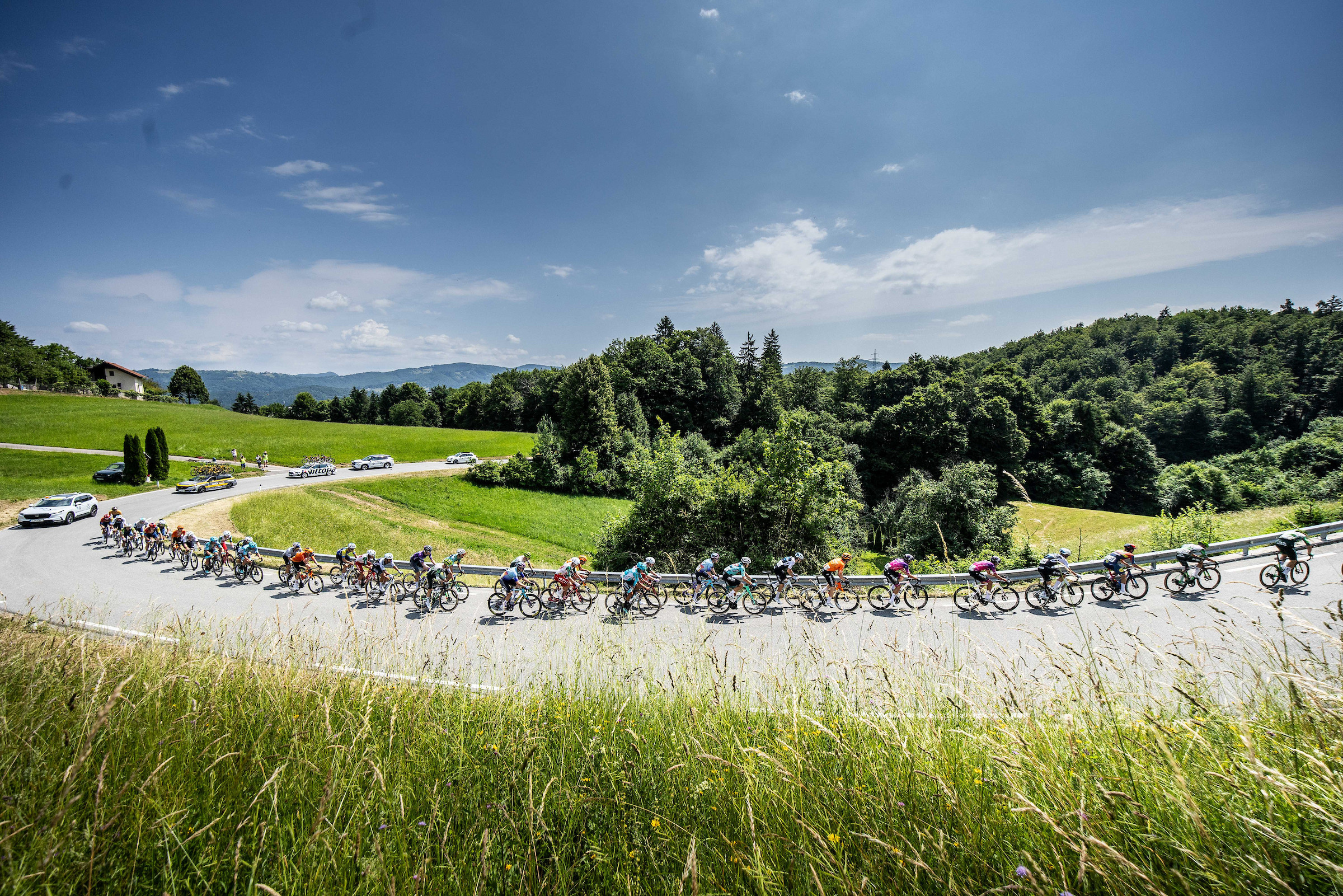
2026 Tour of Slovenia dates confirmed
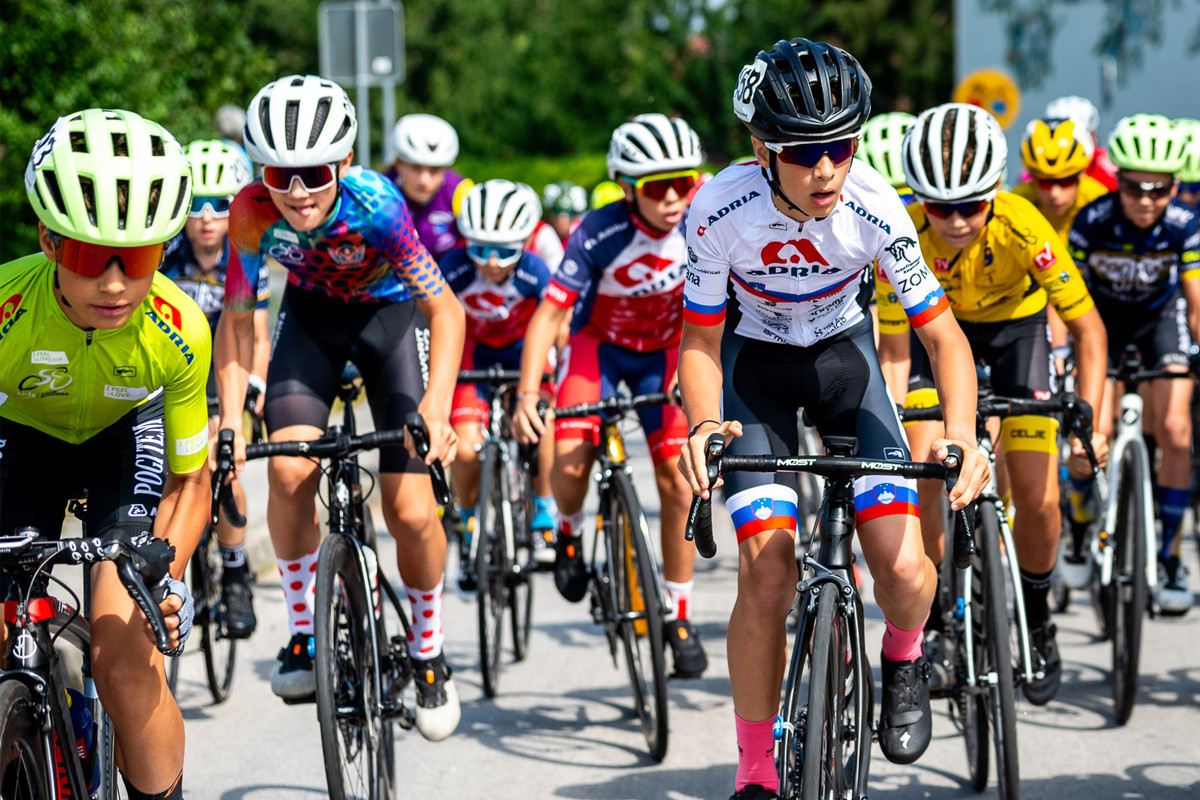
I Feel Slovenia Kids Tour of Slovenia 2025 - 2. etapa

Majice vodilnih na “otroški” Po Sloveniji
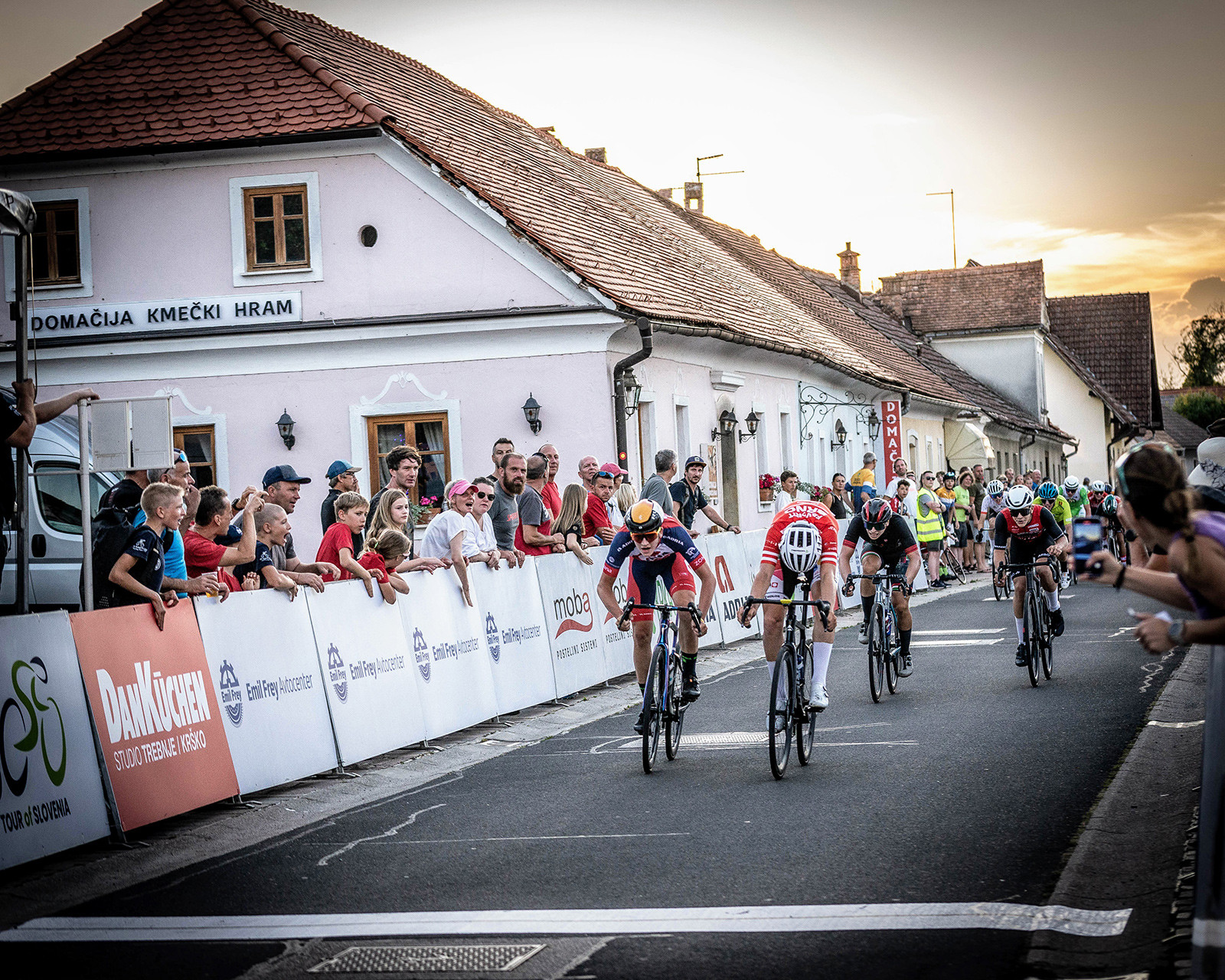
I Feel Slovenia - Kids Tour of Slovenia (4.-6. 7.)
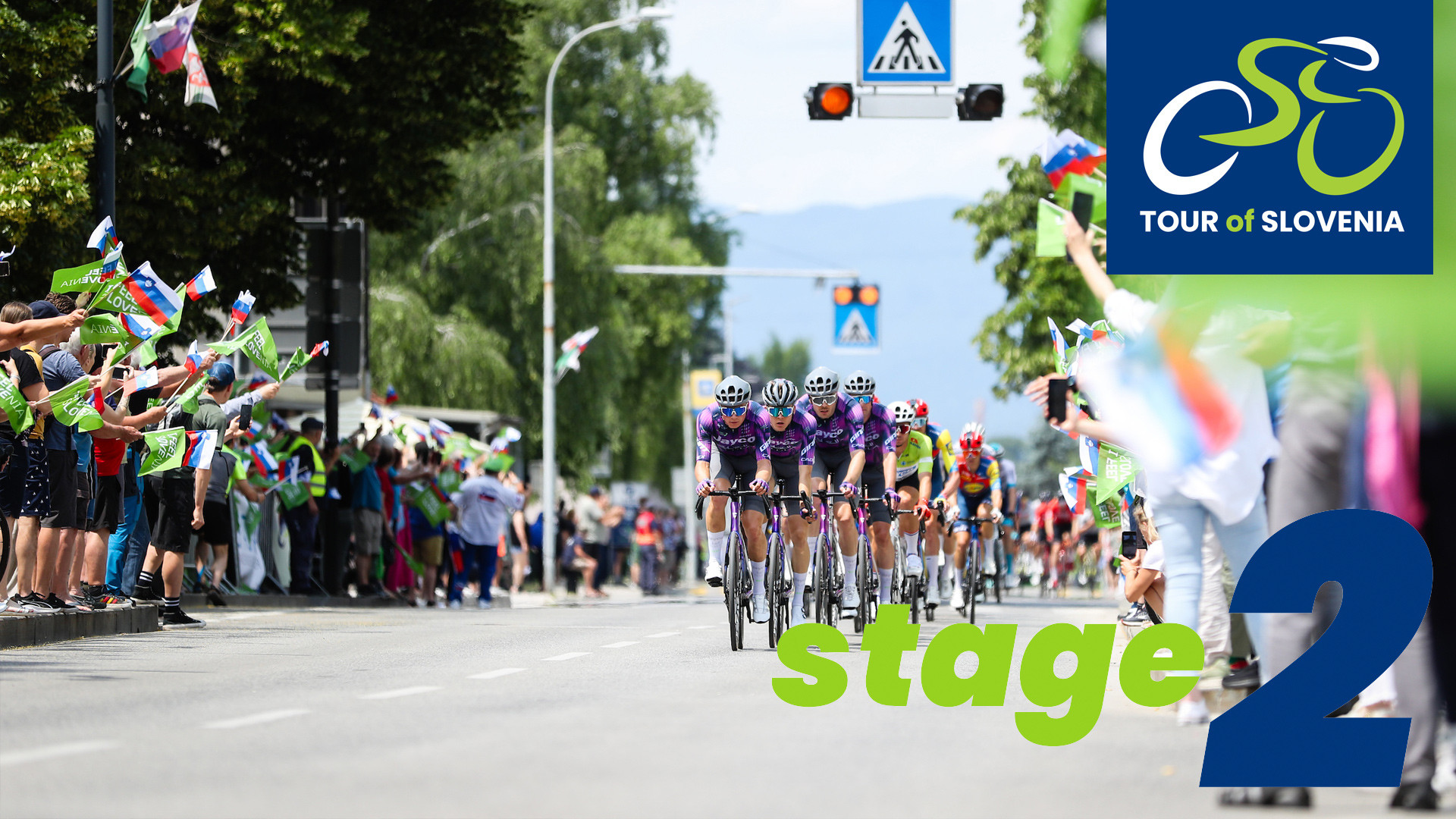
Video highlights of the 31st Tour of Slovenia
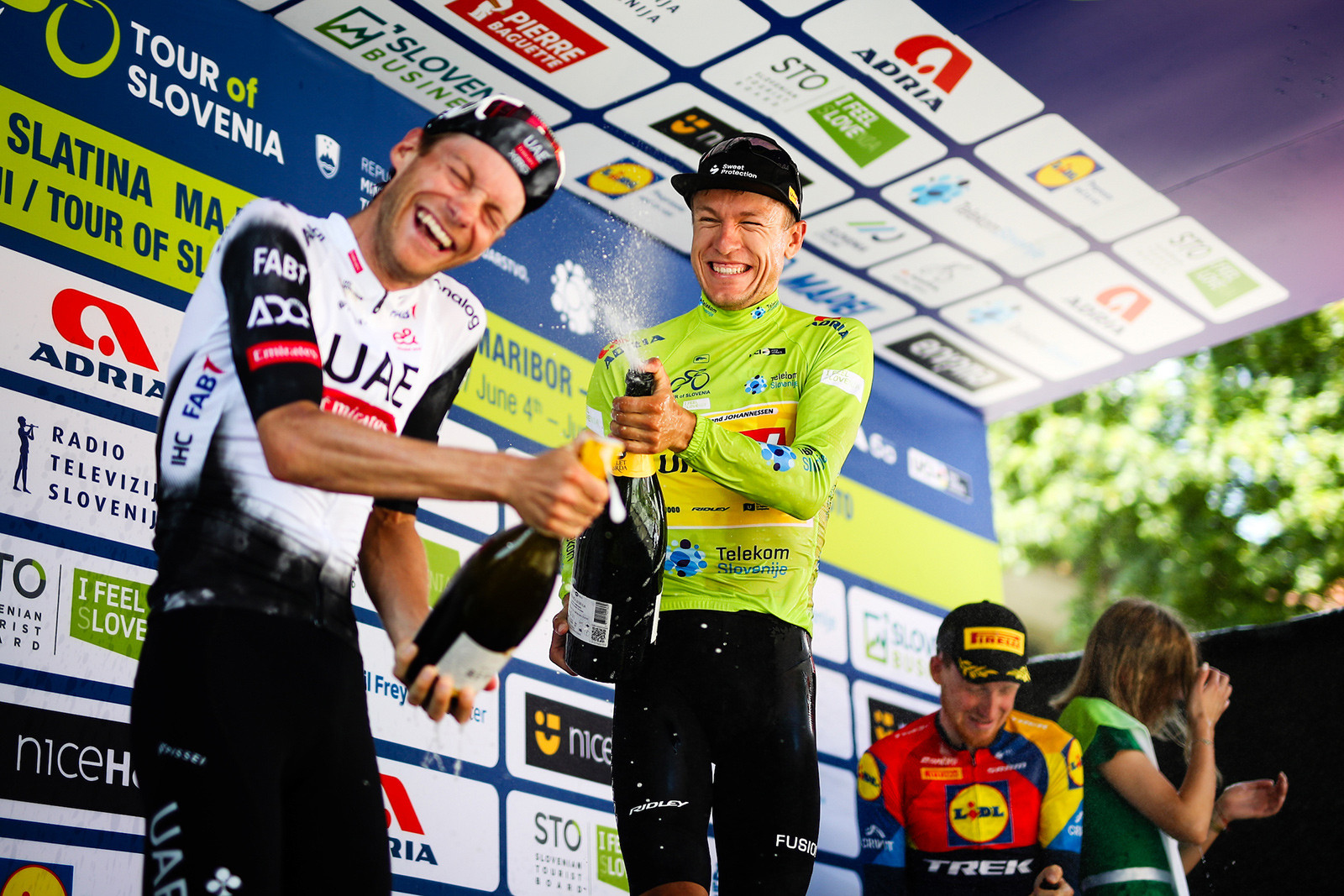
Winners of the 31st Tour of Slovenia
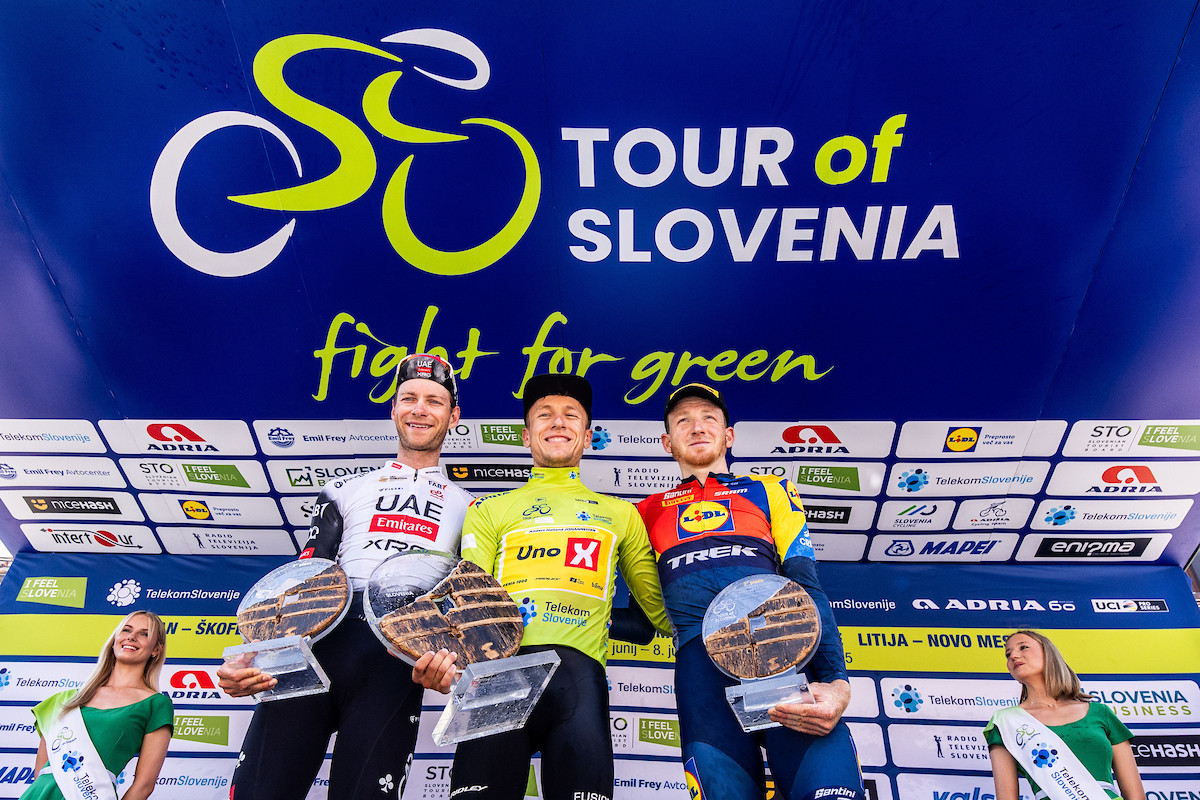
Halland Johannessen wins 2025 Tour of Slovenia
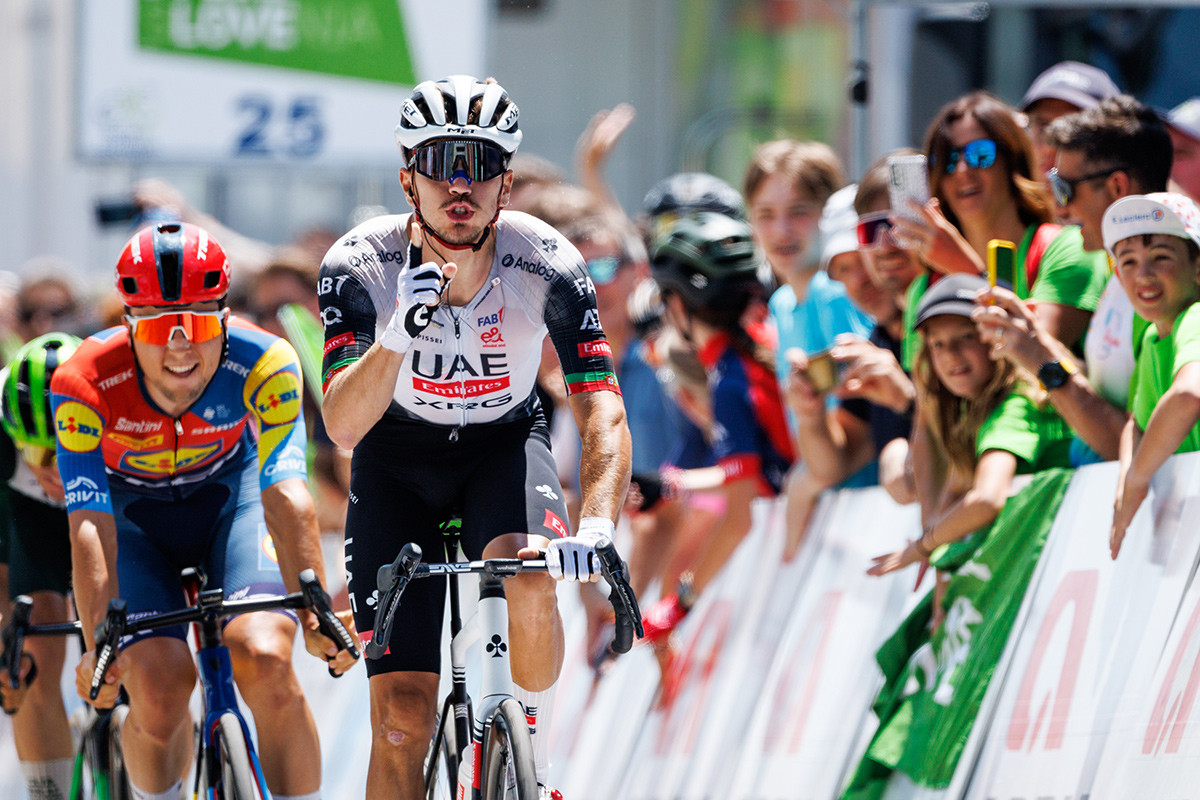
Stage 5 results (Litija-Novo mesto)
